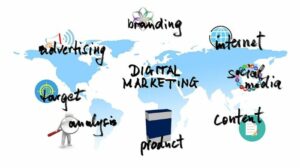Branded content marketing is a powerful tool that enables businesses to create, distribute and promote their content in a way that resonates with their target audience. However, creating content is only half the battle. To achieve success, businesses must also focus on converting that content into leads, sales, and revenue. In this comprehensive guide, we will take you through the journey from concept to conversion, and show you how to create branded content that drives results.
Understanding Your Target Audience
The first step in creating effective branded content is to understand your target audience. You need to know who they are, what they like, and what motivates them. Conducting market research can help you gather valuable insights about your audience, such as their demographics, preferences, and behaviors.
Once you have a clear understanding of your audience, you can tailor your content to their needs and interests. For example, if your target audience is millennials who are interested in sustainability, you could create content that focuses on eco-friendly products and practices.
Defining Your Brand Voice and Messaging
Your brand voice and messaging are critical components of your branded content marketing strategy. Your voice should reflect your brand’s personality and values, and your messaging should be consistent across all your content. This will help you establish a strong brand identity and build trust with your audience.
To define your brand voice and messaging, consider your brand’s mission, values, and unique selling proposition. Ask yourself what sets your brand apart from your competitors, and how you want to be perceived by your audience. Once you have a clear understanding of your brand’s voice and messaging, you can use it to guide your content creation process.
The Importance of Storytelling in Branded Content Marketing
Storytelling is a powerful tool that can help you create engaging branded content that resonates with your audience. By telling stories, you can connect with your audience on a deeper level and create an emotional connection with your brand. This can help you build brand loyalty and drive conversions.
When creating branded content, focus on telling stories that are relevant to your audience and align with your brand’s values. Use storytelling techniques like character development, plot, and conflict to create compelling narratives that capture your audience’s attention. Remember, the goal is not just to entertain your audience, but also to educate them and drive them to take action.
Types of Branded Content
Branded content can take many forms, including blogs, videos, infographics, social media posts, and more. Each type of content has its strengths and weaknesses, and choosing the right format will depend on your goals, target audience, and the message you want to convey.
Blogs are a great way to share in-depth information and insights with your audience. They can help you establish thought leadership and build trust with your audience. Videos are a powerful tool for storytelling and can help you create engaging, shareable content. Infographics are a great way to present complex information in a visually appealing way. Social media posts can help you reach a wider audience and drive engagement.
When choosing the right type of content, consider your audience’s preferences and the channels they use to consume content. You should also consider your resources and budget, as some types of content may require more time and resources to create than others.
Creating a Branded Content Calendar
Creating a branded content calendar is essential for ensuring that your content is consistent, relevant, and aligned with your business goals. A content calendar can help you plan your content in advance, ensure that you have a consistent publishing schedule, and avoid last-minute scrambles to create content.
When creating a content calendar, consider your business goals, key events, and holidays that are relevant to your audience. You should also consider the different types of content you want to create and the channels you will use to distribute it. A content calendar will help you stay organized and ensure that your content is aligned with your overall marketing strategy.
Measuring the Success of Your Branded Content Marketing Efforts
To determine the success of your branded content marketing efforts, you need to track and measure your results. This will help you identify what is working and what is not, and make data-driven decisions about your content strategy.
When measuring the success of your branded content, consider metrics like website traffic, social media engagement, lead generation, and sales. You should also consider qualitative metrics like brand awareness and customer satisfaction. By tracking these metrics, you can identify trends and patterns in your data and make informed decisions about your content strategy.
Tools and Resources for Creating Branded Content
Creating branded content can be challenging, but there are many tools and resources available to help you. Here are some tools and resources that can help you create engaging, effective branded content:
- Canva: This graphic design tool can help you create professional-looking graphics, infographics, and social media posts.
- Hootsuite: This social media management tool can help you schedule and publish your social media content, as well as track your social media metrics.
- Google Analytics: This tool can help you track your website traffic, user behavior, and conversions.
- CoSchedule Headline Analyzer: This tool can help you create effective headlines for your blog posts and other content.
Conclusion: The Future of Branded Content Marketing
Branded content marketing is a powerful tool that enables businesses to create engaging, effective content that resonates with their audience. By focusing on understanding your audience, defining your brand voice and messaging, and using storytelling techniques, you can create branded content that drives results. Remember to choose the right type of content, create a content calendar, and measure your results to ensure your content is aligned with your business goals. With the right tools and resources, you can take your branded content marketing to the next level and achieve success in the digital world.




